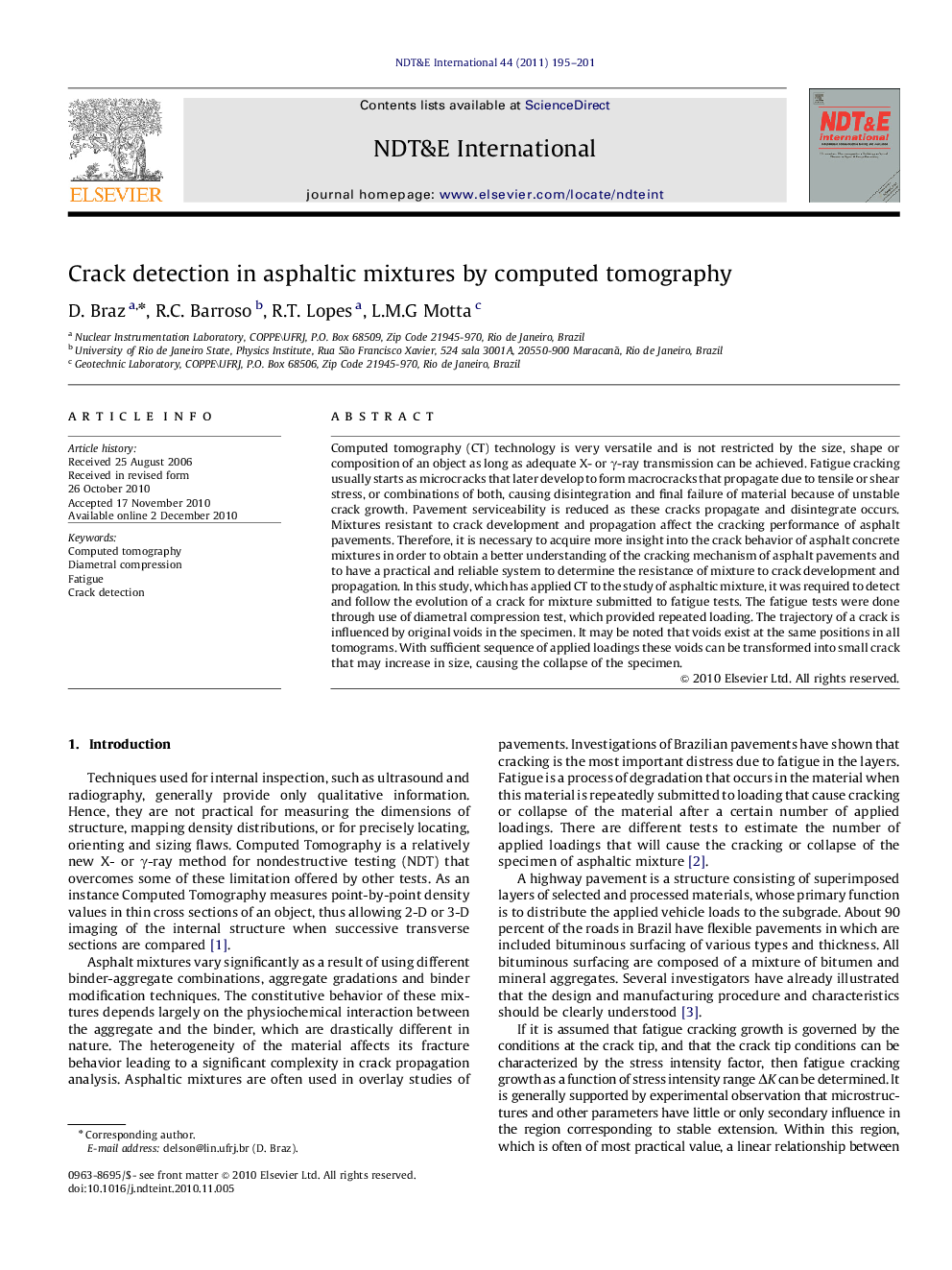| Article ID | Journal | Published Year | Pages | File Type |
|---|---|---|---|---|
| 295485 | NDT & E International | 2011 | 7 Pages |
Computed tomography (CT) technology is very versatile and is not restricted by the size, shape or composition of an object as long as adequate X- or γ-ray transmission can be achieved. Fatigue cracking usually starts as microcracks that later develop to form macrocracks that propagate due to tensile or shear stress, or combinations of both, causing disintegration and final failure of material because of unstable crack growth. Pavement serviceability is reduced as these cracks propagate and disintegrate occurs. Mixtures resistant to crack development and propagation affect the cracking performance of asphalt pavements. Therefore, it is necessary to acquire more insight into the crack behavior of asphalt concrete mixtures in order to obtain a better understanding of the cracking mechanism of asphalt pavements and to have a practical and reliable system to determine the resistance of mixture to crack development and propagation. In this study, which has applied CT to the study of asphaltic mixture, it was required to detect and follow the evolution of a crack for mixture submitted to fatigue tests. The fatigue tests were done through use of diametral compression test, which provided repeated loading. The trajectory of a crack is influenced by original voids in the specimen. It may be noted that voids exist at the same positions in all tomograms. With sufficient sequence of applied loadings these voids can be transformed into small crack that may increase in size, causing the collapse of the specimen.
